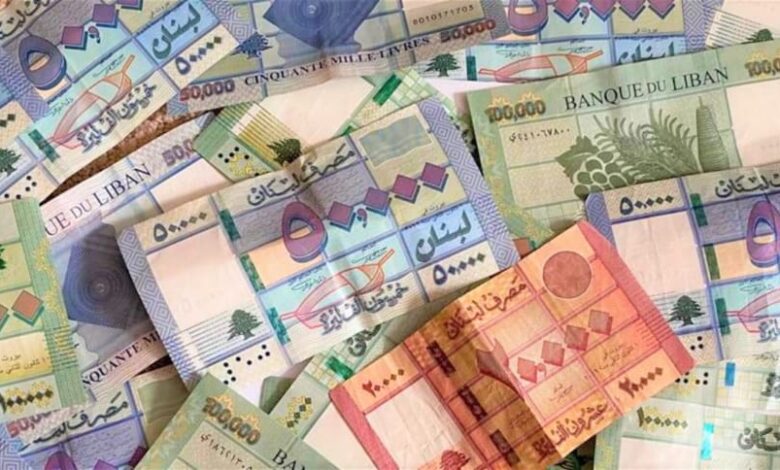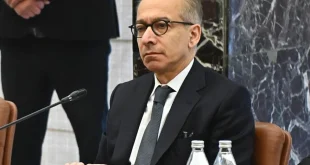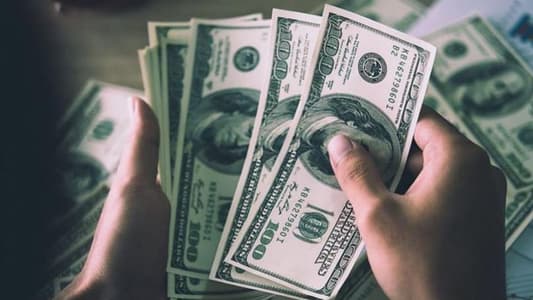الاقتصاد اللبناني في 50 عامًا: من الرفاهية إلى الانهيار
على مدار خمسين عامًا، شهد الاقتصاد اللبناني تغييرات جذرية كانت شاهدة على صعوده ثم سقوطه. كان لبنان في الخمسينات وحتى بداية السبعينات يُعرف بلقب “سويسرا الشرق” نظراً لموقعه الاستراتيجي ومكانته الكبيرة في مجالات الإنتاج والخدمات والسياحة. لقد كان مركزًا ماليًا ومصرفيًا مرموقًا بفضل قوانينه المرنة وسرّيته المصرفية. لكن مع اندلاع الحرب الأهلية في العام 1975، بدأ لبنان يدخل في مرحلة من التراجع الاقتصادي العميق الذي استمر لعقود.
لبنان في زمن النعيم: من الاقتصاد الحر إلى الانهيار
في فترة ما قبل الحرب، كان لبنان يُعتبر مركزًا اقتصاديًا حيويًا. يروي أمين عام الهيئات الاقتصادية، نقولا شمّاس، أن لبنان كان يشهد توازنًا كبيرًا في الصادرات والواردات حيث كانت الصادرات تفوق الواردات بنسبة كبيرة. بالإضافة إلى ذلك، كانت الليرة اللبنانية تتمتع بقيمة عالية؛ فكل دولار يعادل 2.30 ليرة، ما يعكس استقرارًا اقتصاديًا كان من أبرز سمات لبنان في تلك الفترة.
الآثار الكارثية للحرب على الاقتصاد اللبناني
إلا أن اندلاع الحرب الأهلية أودى بالاقتصاد اللبناني إلى منحدر عميق. ففي عام 1975، ووفقًا للإحصائيات، كان الناتج المحلي الإجمالي للبنان يبلغ 4.67 مليار دولار، لكنه تراجع بشكل حاد خلال سنوات الحرب. ففي العام 1990، هبط الناتج المحلي إلى 2.8 مليار دولار، أي بتراجع قدره 40%. وتفاقم الوضع في سنوات الحرب، حيث شهد الاقتصاد اللبناني انحدارات حادة نتيجة للصراع العسكري.
الاقتصاد اللبناني في مرحلة ما بعد الحرب
بعد انتهاء الحرب، ومع بداية التسعينات، سعى لبنان إلى التعافي من آثار الحرب الكارثية. ومع ذلك، فإن الانتعاش كان بطيئًا ومتقطعًا. ففي عام 1991، كان الاقتصاد اللبناني في بداية التعافي بعد الحرب، لكن في العام 1992، جاء انهيار العملة الوطنية ليحبط جهود التعافي، حيث وصل سعر صرف الليرة إلى 2750 ليرة للدولار. كما تواصلت الأزمات الاقتصادية عبر السنوات مع تأثر الاقتصاد بالحروب والاضطرابات السياسية.
لبنان في مرحلة الدولرة والتضخم
من أبرز النتائج التي خرجت بها الحرب كانت الدولرة، حيث ارتفعت نسبة الدولرة في لبنان بشكل غير مسبوق في السبعينات، مما ساهم في انهيار سعر صرف الليرة اللبنانية بشكل كبير خلال الثمانينات. من 2.30 ليرة للدولار قبل الحرب، إلى 2750 ليرة في عام 1992، ما شكل ضربة قاسية للعملة الوطنية.
التحديات الاقتصادية في لبنان: من الانهيار إلى الأزمة المالية في 2019
إن أزمة 2019 الاقتصادية كانت بمثابة القشة التي قسمت ظهر البعير. فقد شهد لبنان تدهورًا نقديًا حادًا، مع انهيار الليرة اللبنانية بشكل غير مسبوق وتدفق التضخم إلى مستويات عالية جدًا. وقد أدت الأزمة إلى فقدان اللبنانيين لودائعهم في البنوك، حيث هوت قيمة الليرة من 1500 إلى أكثر من 140,000 ليرة لبنانية.
التحديات المستقبلية: هل هناك أمل في النهوض؟
على الرغم من الانحدار الذي مر به الاقتصاد اللبناني، يبدو أن الأمل في التعافي يبقى ضئيلًا نظرًا لحجم الخسائر التي تكبدها لبنان، حيث لا تملك الدولة اللبنانية الأموال الكافية لإعادة الإعمار. ويبقى التعويل على المساعدات الخارجية، مثل أموال البنك الدولي وصناديق المانحين، ولكن المبالغ المتوقعة ليست كافية لمواجهة حجم الخسائر.
لبنان في مواجهة العزلة الاقتصادية
ما يعانيه لبنان اليوم من أزمة مالية خانقة، يعكس إلى حد كبير العزلة الاقتصادية التي يعاني منها، حيث يُعتبر منبوذًا اقتصاديًا على الساحة الدولية. مع إغلاق الأسواق الخليجية أمام المنتجات اللبنانية، وانعدام الثقة الدولية، بات لبنان يواجه تحديات كبيرة في سبيل استعادة عافيته الاقتصادية.
The Lebanese Economy Over 50 Years: From Prosperity to Collapse
Over the past 50 years, Lebanon's economy has undergone significant changes, shifting from prosperity to a steep decline. In the 1950s to early 1970s, Lebanon earned the title of “Switzerland of the East” due to its strategic location and its strong presence in the production, services, tourism, and cultural sectors. It was a reputable financial and banking center, benefiting from flexible laws and banking secrecy. However, the outbreak of the civil war in 1975 plunged the country into a prolonged period of economic decline and societal division, changing its face for decades.
Lebanon in the Era of Prosperity: From Free Economy to Collapse
Before the war, Lebanon was considered a vibrant economic hub. According to Nicolas Chammas, the Secretary-General of the Economic Bodies and President of the Beirut Traders Association, Lebanon enjoyed a favorable trade balance, with exports significantly exceeding imports. Additionally, the Lebanese pound held a strong value, with one dollar equating to 2.30 pounds, symbolizing economic stability.
The Catastrophic Effects of the War on Lebanon’s Economy
The outbreak of the civil war, however, dealt a devastating blow to Lebanon's economy. In 1975, Lebanon's GDP stood at $4.67 billion, but this figure plummeted during the war years. By 1990, Lebanon's GDP had fallen to $2.8 billion, a 40% decrease. The economy continued to suffer as the war consumed national resources and infrastructure.
Post-War Economy: Recovery and Setbacks
After the war, Lebanon sought to recover from the war's catastrophic impact, but recovery was slow and intermittent. By 1991, Lebanon's economy was on a slow path to recovery, but in 1992, the national currency collapsed further as the Lebanese pound reached 2750 to the dollar. The economy continued to face challenges throughout the 1990s, with political and military instability causing setbacks.
Dollarization and Inflation in Lebanon
A major consequence of the war was dollarization, as the proportion of dollar-denominated transactions in Lebanon soared in the 1970s, contributing to the Lebanese pound’s collapse during the 1980s. From 2.30 pounds per dollar before the war, the value of the Lebanese pound reached 2750 pounds by 1992, signaling a major blow to the national currency.
Economic Challenges: From Collapse to the 2019 Financial Crisis
The 2019 financial crisis marked a pivotal moment in Lebanon’s economic history. The Lebanese pound collapsed at an unprecedented rate, and inflation skyrocketed, reaching alarming levels. This led to a loss of deposits for Lebanese citizens, as the pound plummeted from 1500 to over 140,000 pounds.
Future Challenges: Is Recovery Possible?
Despite Lebanon’s decline, the hope for recovery remains minimal due to the immense losses incurred. Lebanon does not have sufficient funds to rebuild itself, relying heavily on external aid such as the World Bank and donor funds. However, the anticipated funds are insufficient to address the magnitude of the losses.
Lebanon Facing Economic Isolation
Lebanon’s ongoing financial crisis reflects its economic isolation, as it is now considered a pariah on the international stage. With Gulf markets closed to Lebanese products and a lack of international confidence, Lebanon faces severe challenges in regaining its economic health.
Translated by economyscopes team
المصدر: باتريسيا الجلاد – نداء الوطن
 سكوبات عالمية إقتصادية – EconomyScopes إجعل موقعنا خيارك ومصدرك الأنسب للأخبار الإقتصادية المحلية والعربية والعالمية على أنواعها بالإضافة الى نشر مجموعة لا بأس بها من فرص العمل في لبنان والشرق الأوسط والعالم
سكوبات عالمية إقتصادية – EconomyScopes إجعل موقعنا خيارك ومصدرك الأنسب للأخبار الإقتصادية المحلية والعربية والعالمية على أنواعها بالإضافة الى نشر مجموعة لا بأس بها من فرص العمل في لبنان والشرق الأوسط والعالم




